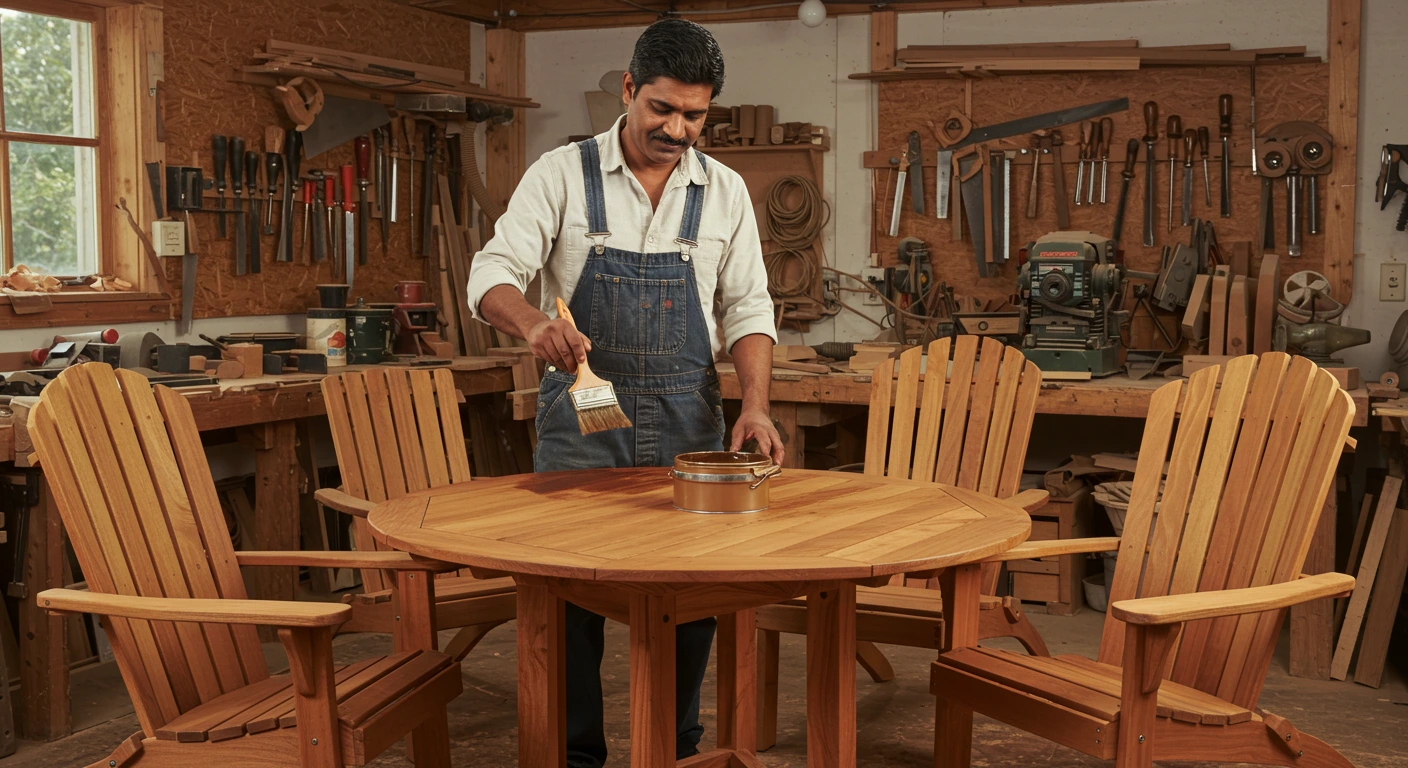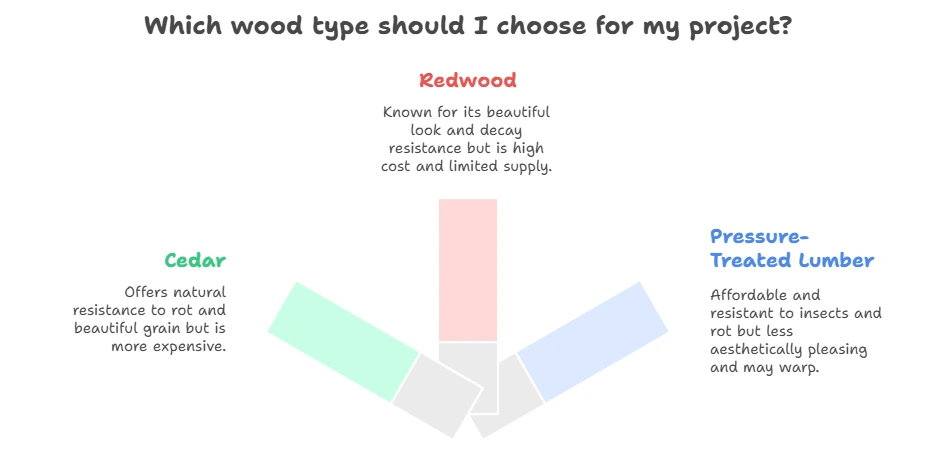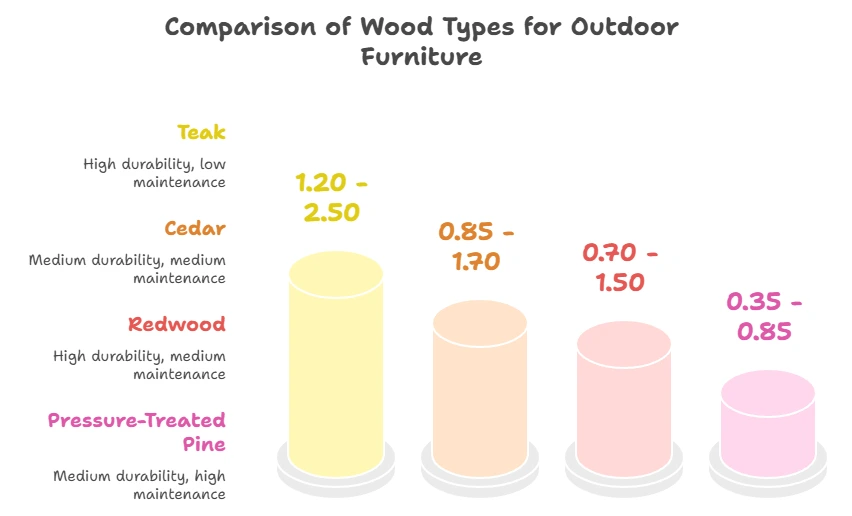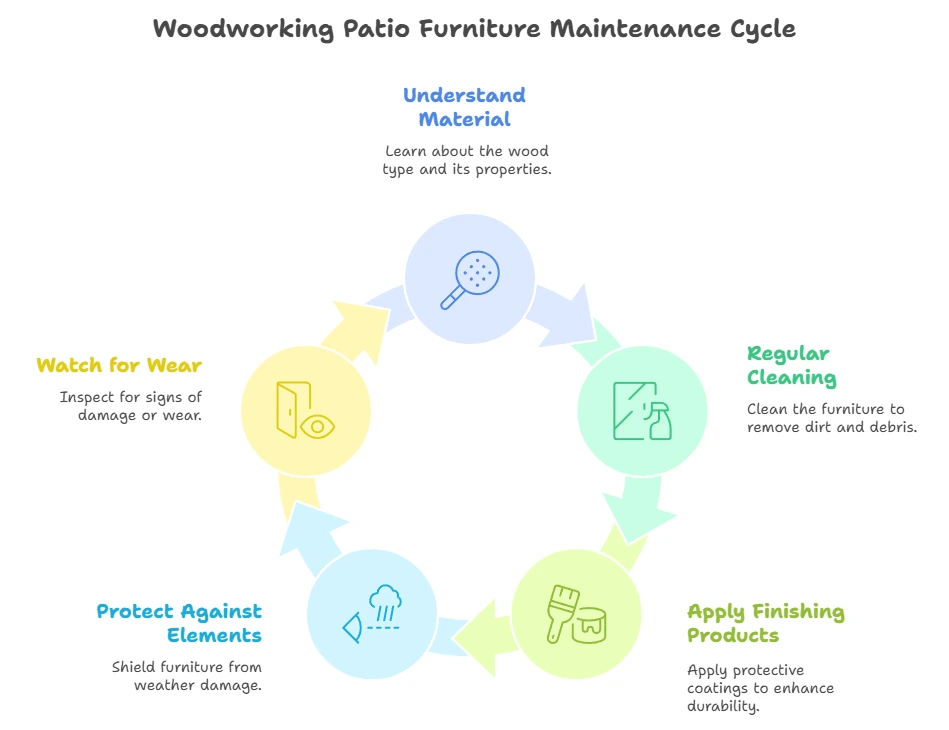
Building your own patio furniture can be a fulfilling project that enhances your outdoor living space while giving you the freedom to express your style. When designing functional woodworking patio furniture plans, you’ll want to keep several key factors in mind to ensure that your creations are both beautiful and practical.
Consider Your Space
Before diving into your woodworking project, take time to assess your patio area. Measure the dimensions of your space carefully. Here are some specifics to consider:
- Available Space: Identify where you want to place your furniture. Consider the layout for maximum comfort and functionality.
- Mobility: Think about if the pieces will need to be moved frequently and if so, build them with lighter materials.
- Style: Decide on a design that complements your home and reflects your personality.
Choose Quality Materials
Choosing the right wood is crucial for durability, especially in outdoor settings. Here are popular options:
- Treated Pine: Affordable and widely available, it’s resistant to decay.
- Cedar: Naturally resistant to moisture and insects, cedar is a go-to for outdoor furniture.
- Teak: Known for its durability and water resistance; it’s a higher-end option that can be worth the investment.
Functional Designs to Consider
Creating designs that meet specific needs can set your woodworking apart. Here are a few functional ideas:
- Convertible Furniture: Consider building benches or tables that can transform based on your requirements, such as extending for larger gatherings.
- Integrated Storage: Design seating areas with built-in storage for cushions or outdoor tools to keep your space tidy.
- Weather Resistance: Use waterproof finishes and cover your furniture when not in use to protect it from elements.
Creating Your Plans
Once you’ve settled on the dimensions and materials, it’s time to draft your plans. Here’s a simple guide to create effective woodworking plans:
- Sketch Your Design: Start with a basic drawing. Make sure to account for measurements.
- Lists of Components: Compile an extensive list of all parts you’ll need, from screws to wood pieces, to avoid mid-project runs to the store.
- Step-by-Step Instructions: Write down each step you will take during the build for easy reference.
Tools Needed
Having the right tools can make your project smoother. Here’s a quick list of essential tools for woodworking patio furniture:
- Circular Saw
- Drill and Drill Bits
- Screwdrivers
- Measuring Tape
- Sanding Block or Electric Sander
Resources for Assistance
For guidance on woodworking techniques and design inspiration, consider visiting resources such as Wood Magazine or check out Ana White for free plans and tips.
Final Checks Before Building
Before starting your project, review your plans and components list. Ask yourself:
- Do I have all the required materials?
- Is my workspace prepared for the project?
- Have I checked my measurements twice?
Building your own woodworking patio furniture can be both a rewarding challenge and an opportunity to personalize your outdoor space. By focusing on your design, material choices, and functional needs, you can create a functional and visually appealing setting for relaxation, gatherings, or quiet evenings.
Essential Tools and Materials for DIY Patio Furniture
Creating DIY patio furniture can be a rewarding project, giving you the freedom to design pieces that fit your outdoor space perfectly. Whether you’re building a table, chairs, or even a bench, having the right tools and materials is vital to your success. Here’s a detailed look at what’s essential for crafting beautiful and sturdy patio furniture.
Basic Tools Required
Before diving into your project, ensure you have the following basic tools:
- Measuring Tape: Accurate measurements are crucial for any project.
- Pencil: For marking wood before cutting.
- Power Drill: Essential for making holes and driving screws.
- Circular Saw or Miter Saw: Perfect for cutting wood to the desired lengths.
- Sandpaper: To smooth edges and surfaces of your furniture.
- Wood Clamps: Useful for holding pieces together while the glue dries.
- Screwdriver: To assemble your furniture easily.
Advanced Tools for Precision
For more complex designs, consider investing in advanced tools:
- Table Saw: Provides more control and precision for larger cuts.
- Router: Ideal for adding decorative edges or grooves.
- Jigsaw: Great for making curved cuts or intricate designs.
- Kreg Jig: A tool that allows for pocket hole joinery, resulting in strong, clean joints.
Essential Materials for Patio Furniture
Choosing the right materials is just as important as having the right tools. Here’s a list of the essential materials you may need:
- Wood: Common options include cedar, redwood, or pressure-treated lumber for weather resistance.
- Wood Glue: Helps in bonding the pieces together securely.
- Outdoor Paint or Sealant: Protects your furniture from the elements.
- Metal Hardware: Including screws, brackets, and hinges that provide structural support.
- Cushions and Fabrics: To add comfort to chairs and benches, look for materials that are weather-resistant.
Choosing the Right Wood
When selecting wood for your patio furniture, consider the following types:
| Wood Type | Pros | Cons |
|---|---|---|
| Cedar | Natural resistance to rot; beautiful grain. | Can be more expensive than other options. |
| Redwood | Beautiful look; resistant to decay. | High cost; limited supply. |
| Pressure-Treated Lumber | Affordable; resistant to insects and rot. | Not as aesthetically pleasing; may warp over time. |

Each of these wood types comes with its own set of benefits and drawbacks. Choose one that matches both your budget and aesthetic preference.
Where to Find Plans
Once your tools and materials are ready, the next step is finding plans for your patio furniture. Websites like Wood Magazine provide free plans that include dimensions, materials lists, and step-by-step instructions. Another great site is Ana White, which offers a variety of DIY furniture plans suited for all skill levels.
Safety First
Don’t overlook safety. Always wear safety goggles while using power tools and consider ear protection as well. A well-ventilated area is essential when working with wood stains or finishes. By gathering these essential tools and materials, you’ll be well-equipped to tackle your DIY patio furniture project. With creativity and effort, you can build beautiful, durable pieces that will enhance your outdoor living space for years to come.
Tips for Choosing the Right Wood for Outdoor Furniture
Choosing the right wood for your outdoor furniture is essential to create durable and beautiful pieces that withstand the elements. With many options available, you’ll want to consider various factors to ensure your selection meets your needs. Here are some tips to help guide your decision-making process.
Understand the Characteristics of Different Woods
Each type of wood has unique properties that can affect its performance outdoors. Here are a few popular choices:
- Teak: Known for its natural oils, teak is resistant to water and pests, making it a top choice for outdoor furniture. Its rich golden color adds instant elegance to any space.
- Cedar: This wood is lightweight, naturally resistant to decay, and often has a pleasant aroma. Cedar also offers good insulation against temperature fluctuations.
- Redwood: Known for its strength and beauty, redwood is also resistant to moisture and insects. Its deep reddish hue can enhance the appearance of your patio.
- Pressure-Treated Pine: This affordable option is treated to resist rot and insects. It’s a versatile wood that can be painted or stained to fit your decor.
Consider the Climate
Your local weather conditions dictate how well certain woods will perform. If you live in a wet climate, consider woods like teak or cedar that handle moisture well. On the other hand, if you reside in areas with high humidity, redwood’s natural properties can prove beneficial.
Prioritize Durability
Outdoor furniture faces various challenges, from sun exposure to rain and snow. Durability is key. Teak, for instance, can last for decades with proper care. A table made from cedar can also serve you well, but might require more maintenance to retain its appearance.
Think about Maintenance
Different woods require various levels of maintenance. Consider how much time you’re willing to devote to upkeep:
- Low Maintenance: Teak and aluminum are great for those who want a beautiful furniture piece with minimal upkeep.
- Medium Maintenance: Redwood and cedar require some maintenance, such as cleaning and periodic sealing to protect against fading.
- High Maintenance: Pressure-treated woods may need regular sanding and staining to keep them looking their best.
Evaluate Aesthetics
The visual appeal of the wood you choose is vital, as it should match your outdoor style. Darker woods like mahogany provide a classic look while lighter options like pine offer a more casual feel.
Budget Considerations
Price can vary widely among different wood types. It’s important to establish a budget before shopping. Consider the longevity and maintenance costs alongside the initial purchase price. Investing in higher-quality wood may save you money in the long run due to less frequent replacements.
Environmental Impact
It’s essential to consider where the wood comes from and its environmental impact. Look for woods certified by organizations such as the Forest Stewardship Council (FSC) to ensure they are sourced sustainably. This contributes to global conservation efforts and supports responsible forestry practices.
Table of Wood Options for Outdoor Furniture
| Wood Type | Durability | Maintenance Level | Price Range |
|---|---|---|---|
| Teak | High | Low | $1.20 – $2.50+ per board foot |
| Cedar | Medium | Medium | $0.85 – $1.70+ per board foot |
| Redwood | High | Medium | $0.70 – $1.50+ per board foot |
| Pressure-Treated Pine | Medium | High | $0.35 – $0.85 per board foot |

By being aware of these key factors when selecting wood for your outdoor furniture, you can ensure you make a choice that suits both your aesthetic desires and practical requirements. For more detailed plans and strategies for building outdoor furniture, you can check out Fine Woodworking or Wood Magazine. Remember to think about safety as well. If you have little ones or pets around, consider avoiding treated woods that might have chemicals that could pose a risk. Choosing natural, untreated wood can often provide peace of mind while still creating beautiful outdoor spaces.
Step-by-Step Guide to Building a Wooden Patio Set
Building your own wooden patio set can be a fulfilling project that enhances your outdoor space. With the right woodworking patio furniture plans, you can create beautiful and functional pieces that reflect your style. This guide will walk you through each step, ensuring that you have a successful build. First, gather your materials. Here’s a list of what you’ll need:
- Pressure-treated lumber (e.g., 2x4s, 4x4s for frame)
- Outdoor wood screws
- Wood glue
- Sandpaper (varying grits)
- Wood finish (stain or paint)
- Measuring tape
- Chisel
- Power drill
- Table saw or circular saw
- Protective gear (goggles, gloves)
Next, you’ll want to choose a design for your patio set. Consider what pieces you need, such as:
- A dining table
- Chairs or benches
- A coffee table
- Side tables
Once you’ve decided on the items to build, sketch out your designs. Ensure that you take accurate measurements for your space. If you’re not confident in your design skills, consider visiting websites like Wood Magazine or Instructables for inspiration and ready-to-use plans.
Cutting Your Lumber
With your plan in hand, it’s time to cut your lumber to size. Here’s how to do it safely:
- Measure and mark your lumber according to your design plans.
- Use a straight edge or a square to ensure clean cuts.
- Cut the pieces using a table saw or circular saw, wearing your protective gear.
After cutting, sand all the edges and surfaces of your wood pieces. This step is crucial for achieving a smooth finish and preventing splinters. Start with a coarse grit sandpaper and gradually move to a finer grit for a polished look.
Assembling the Frame
Now that your lumber is prepared, assemble the frame of your furniture. It helps to dry-fit the pieces first to see how they come together. Here are some tips for assembly:
- Use wood glue on joints for extra strength.
- Secure pieces with outdoor wood screws to ensure durability against the elements.
- Check for squareness and adjust as necessary before fully tightening screws.
Once the frame is assembled, you can add any additional features, such as cross braces for stability or decorative elements. This is also the time to build the tabletops or seat slats, ensuring they are evenly spaced for comfort.
Finishing Your Furniture
After the assembly, it’s important to finish your patio furniture properly. Choosing an outdoor wood finish, such as a sealant or stain, will help protect your wood from moisture and UV rays. Here’s how to apply it:
- Clean your furniture to remove any dust or debris.
- Apply the wood finish with a brush or rag, following the manufacturer’s instructions.
- Allow the finish to dry completely before using your furniture.
Don’t forget that proper maintenance will extend the life of your patio set. Every few years, reapply the finish as needed and check for any signs of wear and tear. You can find more resources on building quality outdoor furniture on sites like Ana White or Woodworker’s Source. With dedication and these woodworking patio furniture plans, you will create a beautiful area to relax and entertain friends and family outdoors. Enjoy the satisfaction of building your own outdoor furniture while adding personal touches that showcase your creativity.
Maintaining Your Woodworking Patio Furniture for Longevity

Woodworking patio furniture is a beautiful addition to your outdoor space, providing comfort and style for relaxation and entertainment. To keep your furniture looking great and enduring through the seasons, it’s essential to prioritize maintenance. Here are several tips to help you maintain your woodworking patio furniture for longevity.
Understanding the Material
Before diving into maintenance practices, it’s vital to know the type of wood used for your furniture. Common types include teak, cedar, redwood, and pressure-treated pine. Each type has its unique properties and maintenance needs:
- Teak: Naturally resistant to moisture and decay, teak requires minimal maintenance and is often oiled to maintain its golden color.
- Cedar: This wood is lightweight and naturally resistant to insects but should be treated regularly to prevent warping.
- Redwood: Known for its beauty, redwood requires regular sealing to protect it from sun damage.
- Pressure-Treated Pine: This type of wood is durable and affordable but needs consistent care to extend its life.
Regular Cleaning is Key
Keeping your woodworking patio furniture clean is essential for preserving its beauty and longevity. Here’s how to clean different types of wood:
- Use a soft-bristled brush or cloth to remove dirt and debris.
- Prepare a solution of mild soap and water, and gently scrub the surfaces.
- Rinse thoroughly with clean water and allow it to dry completely.
For stubborn stains, use a mixture of vinegar and water or a gentle wood cleaner. Avoid harsh chemicals, as they can damage the finish and the wood itself.
Apply Finishing Products
Applying finishes protects your woodworking patio furniture from moisture and UV rays. Here are some options you can consider:
- Sealants: A clear sealant helps protect the wood while maintaining its natural color. Look for ones labeled for outdoor use.
- Oils: For woods like teak, oiling annually keeps the wood looking shiny and helps repel water.
- Stains: Use a semi-transparent stain to add color and enhance the wood’s grain while providing protection.
Make sure to follow the manufacturer’s instructions when applying these products for the best results.
Protect Against the Elements
Your woodworking patio furniture is constantly exposed to sun, rain, and snow. Here’s how you can protect it:
- Cover your furniture: Use protective covers when not in use. This simple step can significantly extend its life.
- Avoid direct sunlight: Place your furniture in shaded areas or use an umbrella to prevent sun damage.
- Store during harsh weather: If possible, bring your furniture indoors during winter months or severe storms.
Watch for Signs of Wear
Being proactive can save you time and money in repairs. Keep an eye out for:
- Cracks or splits in the wood
- Signs of warping or bending
- Peeling paint or stains
- Rust on any metal components
If you notice any issues, address them swiftly. Sand down rough spots and refinish as necessary to maintain the furniture’s integrity.
Seasonal Maintenance Checklist
| Season | Maintenance Task |
|---|---|
| Spring | Inspect for winter damage, clean, and apply sealant. |
| Summer | Check for fading, reapply oils or stains, and clean. |
| Fall | Clean thoroughly, cover, and prepare for winter. |
| Winter | Store indoors, if possible, or protect with a cover. |

Following these maintenance tips will help ensure that your woodworking patio furniture remains a stunning part of your outdoor experience for many years. For more information on woodworking and maintenance tips, consider visiting Wood Magazine or Woodworkers Source. Keeping your patio furniture in excellent condition not only enhances your outdoor space but also brings joy and comfort to your gatherings with family and friends.
Conclusion
Creating your own woodworking patio furniture can transform your outdoor space into a haven of comfort and style. By carefully designing functional furniture plans, you ensure that your pieces not only look good but also serve their purpose well. With the right essential tools and materials at your disposal, the task becomes much more accessible, allowing you to bring your creative vision to life.
Choosing the right wood is crucial for outdoor furniture, as it must withstand elements while retaining its beauty. Whether you prefer the durability of teak or the charm of cedar, your choice directly impacts the longevity and maintenance of your furniture. Following a step-by-step guide can simplify the building process, giving you clear instructions that help you avoid common pitfalls.
Once you’ve built your wooden patio set, proper maintenance is essential for ensuring its lifespan. Regular cleaning, applying finishes, and protecting from harsh weather will keep your furniture looking fresh and inviting season after season.
By integrating these elements—design, tools, material selection, construction, and upkeep—you can craft beautiful woodworking patio furniture that enhances your outdoor living space. Embrace the satisfaction of bringing your ideas to life, and enjoy the rewards of your hard work each time you relax on your newly constructed furniture. Start planning today, and transform your patio into the outdoor oasis you’ve always dreamed of.